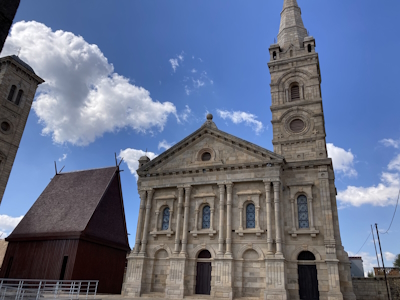La Haute Ville d’Antananarivo

La Haute Ville d’Antananarivo is part of the Tentative list of Madagascar in order to qualify for inclusion in the World Heritage List.
La Haute Ville d’Antananarivo is a hill in the Malagasy capital where the Merina king Andrianjaka had his palace built in 1610. The property includes major historic buildings, public spaces, sacred places, and historical routes. The Upper Town is a true testimony to the influence and role played by royal architecture in the urban development of the city. It is an urban site of great heritage quality, both in terms of its architectural buildings and its exceptional landscape setting.
Map of La Haute Ville d’Antananarivo
Load mapThe coordinates shown for all tentative sites were produced as a community effort. They are not official and may change on inscription.
Community Reviews
Els Slots

The Upper Town of the Malagasy capital Antananarivo (Tana) is an architectural mix of Asian and European influences, following the tastes of the country’s royal and political elite during the 19th century. It lies on top of the highest hill of Tana, a daunting city with millions of inhabitants that developed like an inverted La Paz. Here the ‘important’ people started living uphill, and the further you go down the poorer it gets. It felt perfectly safe to walk around in the Upper Town by myself. Only near the Rova (the Queen’s palace) I encountered some wannabe guides, but they quickly gave up offering their services when I ignored them.
As I was staying in a guesthouse already halfway uphill, I covered the area on foot all the way. If you come from the lower areas of Tana, such as near the lake, it would be advisable to take a taxi to the Rova and then walk down. My walk started with some 300 steps up the historical Escalier Tavao – in the early morning, this is used as an outdoor gym by the muscular boys of the city. They help each other with their routines, such as doing squats all the way up and down.
Once you’ve finished the stairs, the remaining route is fairly easy. In total, I walked only 7km during the 3.5 hours that I spent in the area. A good first stop along the way is the Museum of Photography: a modern building that shows historical photos stitched together into short films about Malagasy subjects, including one in Room #1 about the historic buildings of Tana. They have a recommended Museum Café as well.
The Upper Town holds many 19th-century churches, most of them in a style that seems to have been imported from the English countryside. This is due to Christianity having been introduced to the island in the mid-19th century by the London Missionary Society. So when the first Malagasy/Merina Queen converted to Christianity, she became a Protestant. Nowadays you’ll still find both Protestant and Catholic churches in each Malagasy town.
The Andafiavaratra Palace was the Palace of the Prime Minister in the late 19th century (who governed the country with the last Queen, right before the French colonial takeover). It is now a museum, but unfortunately, it is fenced off and closed for unknown reasons. A remarkable structure close by is the former Court House, built in 1881 in the style of a Greek temple without walls.
Finally, the Rova entails a large complex, which besides the landmark palace that you can see from all over Tana also includes wooden ‘huts’ that served as King’s palaces (similar to Ambohimanga), royal tombs, and the first church built for the Queen. It is closed for renovation too, already since 1995 after it got almost fully destroyed by fire. When you walk to the back you can peer in through the fence, and see the church and one of the wooden structures. It all looked well-restored and neat to me, I wonder why they still have not reopened.
Overall, I am sitting on the fence about whether this has enough value to ever be inscribed. At first, I did not think so: the most iconic component burned down, and isn’t it too similar to the already inscribed Ambohimanga WHS? But after visiting, I think there could be something in there. Although it comes from the same Merina tradition as Ambohimanga, it is of a later stage, showing the arrival of Christianity and the royal architecture influencing the development of a capital city while Ambohimanga stayed a fortified village. The reconstruction of the Rova after the fire does not have to be a showstopper either: many WHS made out of wood have been rebuilt often and Paris wasn’t delisted either after the Notre Dame burned down. But it is hard to judge it all when the two major sites are closed to visitors. All notable buildings do have newish information panels in Malagasy, French and English though, so there must be future plans for tourism. The area certainly makes for a pleasant visit on foot for a few hours.
Read more from Els Slots here.
Community Likes
Site Info
- Full Name
- La Haute Ville d’Antananarivo
- Country
- Madagascar
- Added
- 2016
- Type
- Cultural
- Categories
- Human activity - Urban planning
- Link
- By ID
Site History
2020 Upstream Process
2017 Preparatory Assistance
2016 Revision
Includes former TWHS Rova d'Antananarivo (Palais de la Reine) and Palais de Andafiavaratra (both (1985-1997))
2016 Added to Tentative List
Site Links
Visitors
30 Community Members have visited.